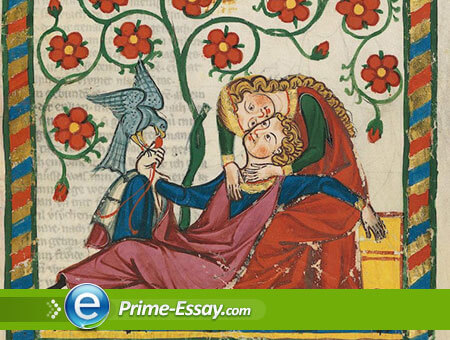
Table of Contents
The theme of love prevailed in the Medieval and Renaissance poetry, which was mainly written in the form of lyrics and sonnets. It’s captivating to explore it in the light of these eras because the-then poets created a brilliant equilibrium between the material and transcendent features of love. They believed that this feeling is either a heavenly gift or a diabolic curse (they didn’t view it from the perspective of chemistry, which made their creations incredibly romantic). The leitmotif related to these sacred feelings was often presented in a pastoral setting, which created the atmosphere of innocence and benevolent intentions. An English poet John Donne created some vivid examples of the Medieval poetry. Though the most celebrated representative of the poetic realm of the Renaissance is William Shakespeare, you shouldn’t underestimate the significance of Christopher Marlowe’s works as he influenced the author of “Romeo and Juliet”. The three poets wrote an abundance of sonnets, lyricizing the theme of love.
Calculate the cost of essay
Medieval Era
The Medieval times were highly religious and prejudicial, but when you start analyzing the theme of love in the poetry of this era, it’s curious to observe that the poets embodied contradictory feelings: their motives are on the verge of carnal and spiritual. While promoting innocence, they confessed their hidden desires. John Donne’s poetry exemplifies the main elements of this era, such as sin, confession, and redemption. His series of nineteen metaphysical poems called “The Holy Sonnets” expose the theme of divine love and the author’s fear not to be accepted in Heaven by the beloved God. On the contrary, his passionate and frank poem “The Canonization” turns earthly feelings into the ethereal experience. Donne believes that genuine feelings are able to canonize mortal people; lovers that are truly devoted to each other can transcend the boundaries of a perishable world because their union is sacramental. Such thoughts are extremely rebellious if to consider the exaggerated morality of the Medieval era.
Literary Devices
When writing his love sonnets, John Donne extensively employed the imagery and vocabulary typical of an Italian poet Francesco Petrarcha. For example, you can find such metaphors as “miraculous ladies” and “deaths for love”. The main feature of his figurative language is an inevitability of tragedy that leads to a lover’s desolation and anguish. Donne also liked to use the motive of disillusion, which helped to create those excellent contrasts: he depicted human love as impeccable and then abrogated this idea, showing that his romantic heroes will never achieve pure heavenly love.
Pastoral Motives
Christopher Marlowe’s poem “The Passionate Shepherd to His Love”, written in a tetrameter style, epitomizes a pastoral poem of the 16th century. Human feelings are interrelated with the inspiring surrounding nature, which intensifies the romantic atmosphere. The shepherd symbolizes sincerity and simplicity: even the voluptuous intentions of the hero appear to be na?ve. He just invites his sweetheart to enjoy nature and modest pleasures of the countryside together.
Shakespeare’s Imagery
If you studied literature attentively, you probably read William Shakespeare’s “Sonnet 130”. The main figurative approach in this sonnet is a peculiar backhanded comparison as the author compares his mistress’s physical features to the sun, snow, coral, roses, perfumes, and music, implying that she is not as perfect as these elements of nature. Anyway, the last lines of the sonnet reveal that his love is sane and objective: though her lips are not as red as corals and her voice is not as tender as music, she is still the rarest human being for him. Love has been perceived imaginatively and philosophically through the ages. It was personified by godlike creatures in ancient mythologies, and then prodigious artists embodied Love in their creations ?“ recollect all those paintings and sculptures with cupids and Aphrodite. Such an eloquent feeling definitely had to be perpetuated in poetry.
What customers say about our service


